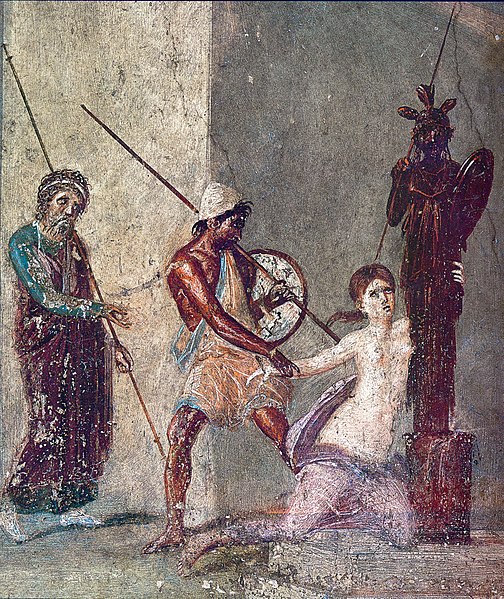In Greek mythology, Polyxena was the youngest daughter of King Priam of Troy and his queen, Hecuba. She does not appear in Homer, but in several other classical authors, though the details of her story vary considerably. After the fall of Troy, she dies when sacrificed by the Greeks on the tomb of Achilles, to whom she had been betrothed and in whose death she was complicit in many versions.
The sacrifice of Polyxena by the triumphant Greeks (Attic black-figure Tyrrhenian amphora, ca. 570–550 BC)
A Renaissance illustration of the killing of Polyxena in Boccaccio's De mulieribus claris
The Rape of Polyxena, Pio Fedi (1855–1865), Loggia dei Lanzi, Florence.
The Sacrifice of Polyxena, 1647, by Charles Le Brun, Metropolitan Museum of Art
In Greek mythology, Priam was the legendary and last king of Troy during the Trojan War. He was the son of Laomedon. His many children included notable characters such as Hector, Paris, and Cassandra.
Scene from the Trojan War: Cassandra clings to the Palladium, the wooden cult image of Athene, while Ajax the Lesser is about to drag her away in front of her father Priam (standing on the left).
Priam killed by Neoptolemus, detail of an Attic black-figure amphora, ca. 520–510 BC
The Death of Priam by Vincenzo Camuccini
Priam Pleading with Achilles for the Body of Hector by Gavin Hamilton (1775)








